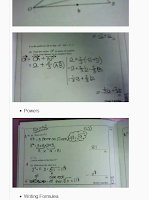On the first day of Christmas my true love gasve to me a artridge in a pear tree..
And so on. For mathematicians everywhere, there are three questions about this song that are just screaming to be asked, and one of those questions can easily be answered.
The second one is a little more difficult, and the third especially so in this day and age.
The first question that tends to get asked is "how many presents does this mean my true love gives me?"
You do need to be careful here, it is not necessarily as easy as people first think (much of maths isn't!). The most common response is to do 1+2+3+ ... +12 = 78, but a little further inspection suggests this may not be the full answer.
Day 1 - A partridge in a pear tree. 1 present
How many presents on day 2? It's not 2...
Day 2 - 2 Turtle Doves and a partridge in a pear tree, That's three presents, so after 2 days you have already been given 4 presents.
What about day three? How many presents on day 3? How many does that make altogether? Now, day 4, day 5, and so on all the way to day 12.
How many presents have you got altogether?
How many of each present (I hope you like gold rings!)
Question 2 is what about the 'n' days of christmas. There is a formula for the total number of presents you get over n (any number of) days, but it is not a trivial solution.
Question 3 is less maths, and more economics... For the twelve days of christmas, how much would it cost!! Good luck ith that; whilst gold rings may be in the Argos catalogue, or on Amazon, and you may be able to source a pear tree at Whitehall Garden Centre, you may struggle a little more with the French Hens, Turtle Doves, and as for Lords a Leaping, I've no idea where to even start!
Good luck!












































